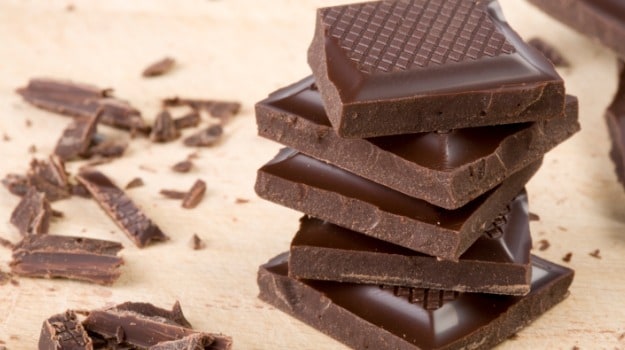The bar of chocolate you’ve secretly wanted to indulge in may not be a guilty pleasure anymore! A group of researchers have found a way to make chocolate more flavourful and nutritious with greater antioxidant content. Previous studies have talked about certain health perks that dark chocolate and also the one in its raw form offer. It is known to lower blood pressure, manage cholesterol, reduce stroke risk and boost memory – all thanks to the presence of antioxidants. Scientifically speaking, antioxidants are chemicals that block the activity of free radicals. Free radicals are molecules that are highly reactive and can cause damage to cell. Capitalizing on these antioxidants can make chocolate more nutritious.
(The Raw, Dark Truth About Chocolate)
Cocoa beans undergo several steps before they take the shape of a chocolate bar. Workers cut down pods from cocoa trees, then split open the pods to remove the white or purple cocoa beans. They are fermented in banana-lined baskets for a few days and then set out to dry in the sun. Roasting is the next step which brings out the flavour, but some of the healthful polyphenols (antioxidants) are lost during the roasting process. Emmanuel Ohene Afoakwa, a professor of food science and technology at the University of Ghana worked to figure out a way to retain as much of the polyphenols and good flavours as possible. "We decided to add a pod-storage step before the beans were even fermented to see whether that would have an effect on the polyphenol content. This is not traditionally done, and this is what makes our research fundamentally different. It's also not known how roasting affects polyphenol content," said Emmanuel Ohene Afoakwa at the University of Ghana. Afoakwa's team divided 300 pods into four groups that were either not stored at all or stored for three, seven or 10 days before processing. This technique is called "pulp preconditioning." After each storage period passed, fermentation and drying was carried out as usual. They found that the seven-day storage resulted in the highest antioxidant activity after roasting. To assess the effects of roasting, researchers took samples from each of the storage groups and roasted them at the same temperature for different times.
(Taste Test - Which is The Best Dark Chocolate Bar?) The current process that is followed involves roasting the beans for 10-20 minutes at 120-130 degrees Celsius. Afoakwa's team adjusted this to 45 minutes at 116 degrees Celsius and discovered that this slower roasting at a lower temperature increased the antioxidant activity compared to beans roasted with the conventional method. In addition, the beans that were stored and then roasted for 45 minutes had more polyphenols and higher antioxidant activity than beans whose pods were not stored prior to fermentation. They suggest that pulp preconditioning allowed the sweet pulp surrounding the beans inside the pod to alter the biochemical and physical constituents of the beans before the fermentation. "This aided the fermentation processes and enhanced antioxidant capacity of the beans, as well as the flavour," he said.
According to them, this new technique would be particularly useful for countries in Southeast Asia and Latin America where cocoa beans produce a type of chocolate with less intense flavour and reduced antioxidant activity. These findings were presented at the 249th National Meeting & Exposition of the American Chemical Society (ACS) in Denver.
With inputs from PTI











